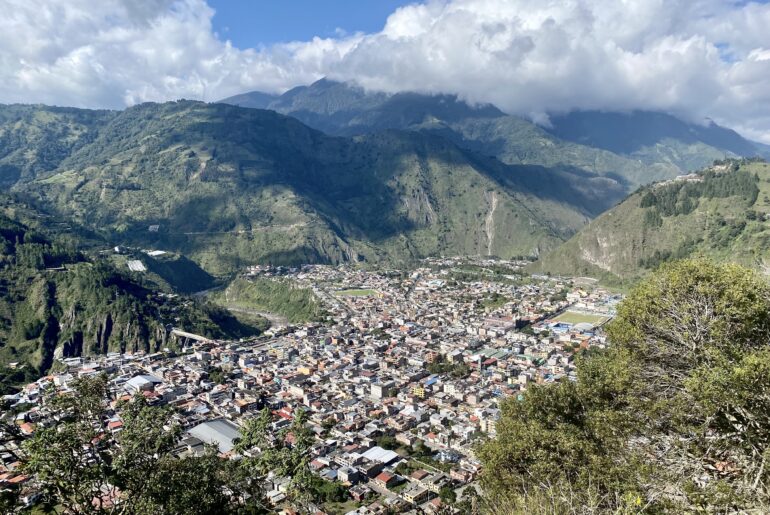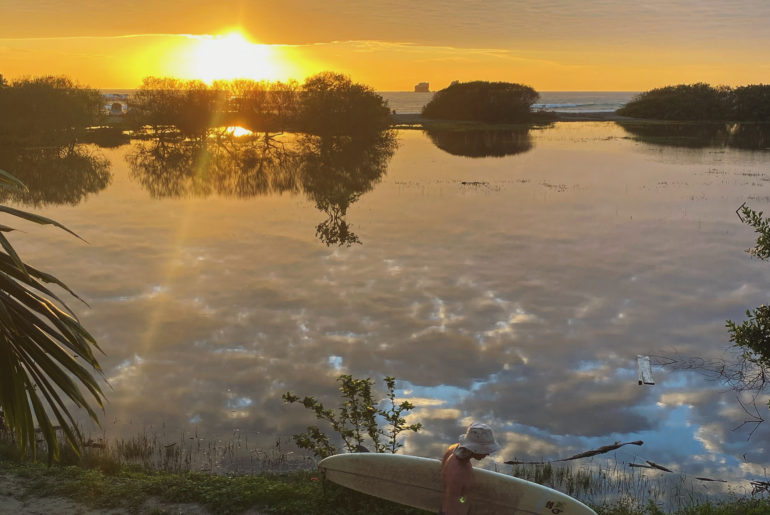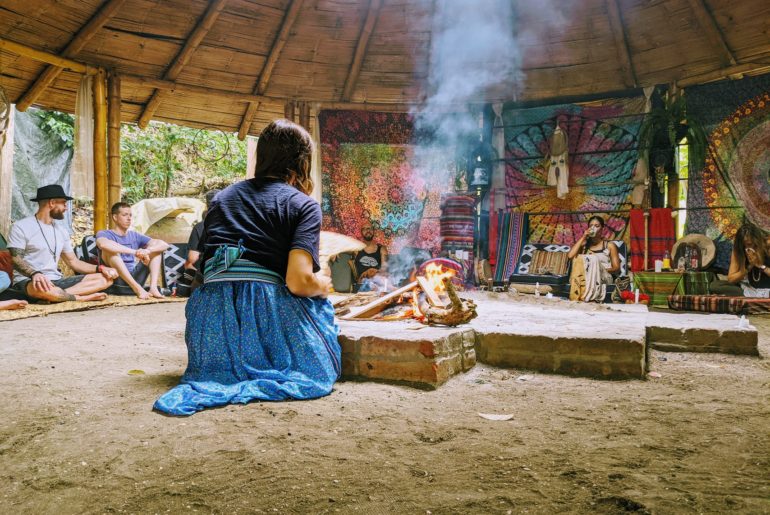‘You know what they say, man. It’s not the altitude, it’s the attitude.’ – Everest (2015 film)
Disclaimer: This is my personal opinion and experience and should not be used or relied upon for any diagnostic, treatment purposes, or as a replacement for seeking professional medical advice.
When hiking at high altitudes for the first time, you may hear mutterings of the feared altitude sickness. Even if you have previously hiked over 3000m, the worries can remain. After all, there are horror stories of people hallucinating, being helicoptered off mountains, and even sadly, deaths.
Altitude sickness is not something to take lightly and can impact anyone from first-time hikers to experienced local hikers. However, do not dismiss the importance and advantages of simple preparation. Educate yourself on warning signs (I am not a medical professional, so please consult your GP), get the right insurance for medical evacuation if this is an option, and listen to your guide’s advice. Even if it means descending.
SKIP TO HIKING AT ALTITUDE tips
For some, preparing to hike at altitude is to take Diamox (acetazolamide). From what I am aware, it is not licensed for this use but has long been prescribed as a preventative. This is because it increases acidity in the blood, driving ventilation and improving breathing as a result.
Many take half the recommended dosage for a few days before the hike to get it into their system and check they have no adverse reactions. They then increase the dose if symptoms appear and/or when they reach higher altitudes. I was in the minority of the people I met during my Kilimanjaro and Everest Base Camp (EBC) hike who did not take Diamox for prevention or treatment.
This was my personal choice, and there is no right or wrong answer.
Below are my reasons why. I have focused on my first two experiences of hiking at altitude in a group because these are time-restricted hikes, so there is an increased risk of altitude sickness. However, the tips also apply to those hiking solo, as I follow the same routine now when hiking at altitude independently.
After much research before Kilimanjaro and consulting my GP, I decided I would only take some with me for reassurance and only use them as treatment if needed.
Why?
I did not like the sound of the side effects such as tingling and increased urination, the chance it could mask symptoms, and the fact it did not guarantee summiting anyway. It is preferably used as a preventative. My Kilimanjaro guide wanted me to take it as a preventative from the beginning, as he believed it increased the chance of summit success, especially as I have asthma.
Often treks are shorter than the time your body needs to adjust to the altitude changes, hence why many experience mild altitude sickness. Unfortunately, people can also quickly develop High Altitude Cerebral Oedema (HACE), which is swelling of the brain, and High Altitude Pulmonary Oedema (HAPE), due to fluid build-up in the lungs. Both can be fatal if not treated immediately.
However, I am glad I stood my ground, as I summited Kilimanjaro without needing Diamox and gave my supply to someone who did.
As a result of my Kilimanjaro experience, I did not take any Diamox to EBC. I felt comfortable with how I previously felt and what steps to take should I notice any worsening of symptoms. That is not to say I did not feel the altitude!
It was worse for me when climbing Kilimanjaro. From day one, my resting pulse rate had increased significantly, and I had thumping headaches, which tended to go away with painkillers, sleep, and a pain relief balm called 4Head. However, some others who took Diamox also experienced similar symptoms.
While my pulse rate had settled by summit night, it still felt like I had climbed a mountain, walking several yards to brush my teeth, with my heart pounding and breath heavy. I often had to get a porter to help me roll my sleeping bag and put it in my bag during the trek as I felt so weak.
Reaching the summit of Kilimanjaro with people throwing up around me whilst feeling slightly nauseous and drunk myself was a surreal experience. It required constant positive affirmations in my head to push away the many doubts I had about making it.
During my EBC trek my pace slowed, I was more breathless, and I tended to need regular breaks. I only experienced a headache and loss of appetite on the way back from Base Camp. Most of my group had a headache on this day, with a couple feeling too unwell to summit Kala Patthar (5643m) the next day.
Subsequent hikes at altitude have left me with headaches and breathlessness, but nothing I do not feel confident managing with the tips below.
Kilimanjaro posts
Everest base camp posts
Here are my top tips for what I believe helps me adapt to high altitudes:
‘POLE POLE’ / ‘bistari, bistari’
Slowly, slowly. You will hear these phrases a lot, depending on where you hike. It can feel unbelievably slow if you feel fine. Despite this, walk slowly! If you have a guide on your hike, listen to them, and follow their pace if recommended, even if you feel physically well. Take in the beautiful scenery. The goal of summiting or reaching Base Camp is only part of the journey. There is no rush.
eat and drink a lot
I drink around 2-3 litres of water at home, so I knew this would increase by 1-2 litres. I also had electrolytes that I drank at times to flavour my water. Listen to your body but aim for at least 2 litres depending on what you are used to. Those in my group who drank minimal amounts of water (less than a litre) became unwell quickly. The same goes for eating. You will lose weight regardless. Eat regularly, even when you have no appetite. Your body needs it.
Ginger helps with sickness, so eat lots of ginger biscuits and drink ginger tea. Many countries also have local remedies to help ease altitude sickness; for example, in Peru, we chewed on coca leaves and drank coca tea.
opt for acclimatisation days and do the extra hikes
Go with a company that includes acclimatisation days or if you go independently, try to do some day hikes at altitude to adjust. EBC treks tend to follow the same itinerary of stopping in Namche Baazar (3440m) and Dingboche (4360m) for an extra night. These days are good to rest up and help adapt by hiking high then sleeping low.
I opted for the 7-day Machame route instead of 6 days to the Kilimanjaro summit. This allows more recovery time instead of having to summit after a long day’s hike and more time to adjust to altitude changes.
Often people decide not to do extra walks once at camp for the night on Kilimanjaro, which is understandable if you are tired or feeling fine. However, every little helps, so do the short walk to a higher altitude with your guide before heading back to the camp again. Ask if they do not offer.
deep breathing
If you practice yoga, then using techniques such as ujjayi is useful to control your breath and increase oxygen flow. It is also a great way to focus during challenging parts of the climb.
I practised the Wim Hof breathing exercise before I went, then each morning and evening during my Kilimanjaro hike. I still complete this method every day, even when I am not at altitude! There are many tutorials about this method online should you want more information about this technique.
Check-in with your guide – and do not panic!
If you feel unwell, let your guide know. Most groups carry pulse oximeters, and guides should check in to see how you are doing. It is essential to let them know how you are feeling, so they can check you out and help get your symptoms under control.
Often guides carry Diamox, help reassure you that mild effects such as headaches are common, and generally relieve any worry! There is a chance you may have to rest where you are, head to a lower altitude briefly, or descend completely. However, it is better for this to happen, as altitude sickness can quickly worsen, potentially leading to an emergency situation that may require medical evacuation or even be fatal.
If you are hiking solo, I recommend you take the usual safety steps of giving the details of your hike to a friend, familiarising yourself with the route, having the right gear, and being aware of altitude sickness symptoms.
Do not ignore them.
cut out caffeine
I drink a lot of coffee. And I mean a lot. I try to reduce this to one cup a day for a week before a trek so I do not mistake caffeine withdrawal headaches for altitude ones!
In general, look after yourself. Keep warm, so your body does not have to work even harder. Prioritise sleep too. After all, your body needs all the help it can get. For example, I was advised not to nap unless necessary, just rest and go to bed early. Most people are in bed by the time the sun sets, as the temperature drops significantly at altitude. This can be as early as 7pm! I tended to sleep quite well, but it takes time to get used to the early bedtime. Figure out what is best for you.
overall
Only one person in my group did not reach Everest Base Camp due to mild altitude sickness, but they did make it to Kala Patthar the next day. He did not take Diamox.
One person in my group did not summit Kilimanjaro, but that was due to other physical health issues.
Generally, on solo hikes, I have not heard of many people using Diamox; I think this is because you are walking at your own pace and usually have time to adjust to the altitude. However, that is not to say you should not familiarise yourself with symptoms to look out for.
The most crucial step to take is to consult with your GP before your first hike at altitude, who will be able to give professional medical advice based on their knowledge of your personal health history. Do not feel taking or not taking Diamox is wrong or cheating. It is simply a personal choice but hopefully an informed one.
Good luck!
here is a link for an introduction to altitude sickness and its symptoms:
https://www.nhs.uk/conditions/altitude-sickness/





9 Comments
Hi Emma, when doing the Wim Hof method each morning and evening – did this include the breath-hold? Or did you just do a few rounds of the hyperventilation. My understanding is that your oxygen levels increase during the hyperventilation but then decrease significantly during the breath-hold. Just curious what you did and if you think it helped.
Cheers,
Dave
Hi Dave! Thanks for the comment.
I did do the breath-hold. I followed the full routine. Initially I did notice some light headedness doing this, and I guess ideally it is practised before being at altitude. However I think it was useful to really become mindful of the breath and controlling it, especially whilst walking. I did seem to build up a resilience to the light headedness and to be honest I use this method on most hikes, including recent ones in Peru!
Best wishes
Emma
Hi Emma,
Thanks for the response. There’s heaps of general Wim Hof stuff online, with stories of him taking groups up Kili and doing breathing exercises along the way, but very little detail as to exactly what they did, or how people use the method at altitude. Either way, I’m heading to Nepal next week to tackle EBC, and will do it without diamox if I can – like you I don’t like the sounds of those side effects and think that focused, conscious breathing will be enough.
Thanks again!
Dave
Hi Dave,
Yes that is true. Maybe I will add some more detail on this post to help others.
If you type in Wim Hof breathing method the step by step stages should come up, if you have trouble I will find a link for you.
Ah how exciting! Good luck. Yes for sure. Keep hydrated and well fed (dal baht will certainly see to that).
Let me know how you get on.
Best wishes
Emma
Pingback: EIGHT TIPS FOR HIKING SOLO AS A WOMAN - travelface
Pingback: KILIMANJARO: SOME QUESTIONS ANSWERED - travelface
Pingback: Tungurahua Hike: 5023m Up Without A Guide - travelface
Pingback: Hiking the Quilotoa Loop from Sigchos: A Hiking Guide - travelface
Pingback: Best Things to Do in Baños, Ecuador - travelface